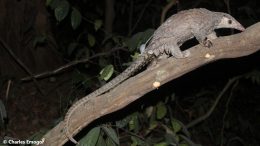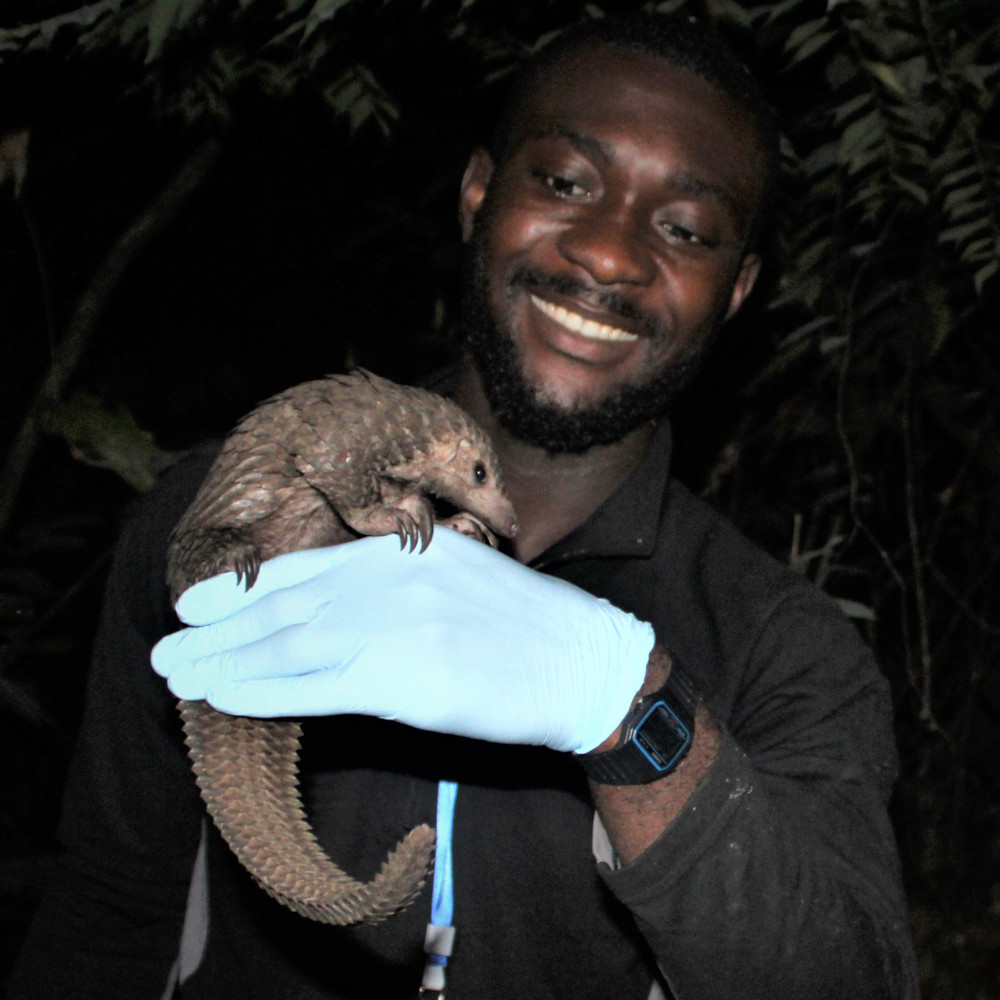The white-bellied pangolin is one of eight evolutionary distinct pangolin species split equally between Africa and Asia. They’re among the very few mammals with scales and have a tongue that, when pulled out of its cavity, is longer than their entire body, which measures about 30 inches. These gentle and somewhat quirky animals should be celebrated, but instead they’re often killed for their unique scales, believed in some cultures to harbor medicinal properties.
Species name:
White-bellied pangolin, also known as the tree or three-cusped pangolin (Phataginus tricuspis)
Description:
White-bellied pangolins look like armadillos, except that they have scales, not rings. They get their name from the white patch on their bellies, one of the few areas not covered in scales. These scales are made of keratin and overlap each other, acting as the animals’ main defense against predation. With the help of their long tongues, these toothless mammals feed almost exclusively on ants and termites and roll into a ball when threatened. Adults usually grow to about 3-4 pounds.
View this post on Instagram
Where it’s found:
Tropical lowland forests and secondary forests in 23 west, central and east African countries make good habitat. These pangolins also live in savanna-forest mosaic and dense woodlands.
IUCN Red List status:
Although no formal population estimate exists for white-bellied pangolins across their range, the species was recently reclassified from vulnerable to endangered to reflect the increasing magnitude of threats to their survival.
Major threats:
Like all pangolin species, white-bellied pangolins are threatened by overexploitation for their meat and scales, which are consumed as food and in traditional medicine, respectively. However, the growing demand from Asia for the scales of African pangolins is disproportionately affecting white-bellied pangolins, since they’re the most common African pangolin species. In addition to poaching, white-bellied pangolins are threatened by habitat loss.
Notable conservation programs or legal protections:
The Convention on the International on the Trade of Endangered Species of Wild Flora and Fauna (CITES) restricts the international commercial trade in all pangolin species, including their derivatives. National laws in many white-bellied range countries also prohibit their killing, with anti-poaching patrols conducted in their habitats to deter poachers and enforce these laws.
My favorite experience:
Seeing my first living white-bellied pangolin after more than a decade of being a pangolin enthusiast filled me with excitement and hope. My challenging 11-hour hike into the heart of Nigeria’s Cross River National Park to monitor these mammals was a success, as I found and tagged about five of them. Seeing these animals in their natural environment was even more exciting, as I had only ever seen their carcasses and scales on display in wild meat markets.
What else do we need to understand or do to protect this species?
While scientists are working to further understand the ecology and dynamics of the illegal pangolin trade to inform science-based conservation actions, governments of countries where pangolins exist and those involved in their trafficking should establish laws protecting pangolins (where they do not already exist) and uphold already-enacted laws. Governments and the public can also support pangolin conservation through increased anti-poaching patrols and the arrest and prosecution of poachers and traffickers, as well as campaigns to increase awareness of their plight.
View this post on Instagram
Key research:
- Buckingham E, Curry J, Emogor C, Tomsett L, Cooper N. 2021. Using natural history collections to investigate changes in pangolin (Pholidota: Manidae) geographic ranges through time. PeerJ 9:e10843 https://doi.org/10.7717/peerj.10843
- Simo, F, Difouo Fopa, G, Kekeunou, S, et al. Using local ecological knowledge to improve the effectiveness of detecting white‐bellied pangolins (Phataginus tricuspis) using camera traps: A case study from Deng‐Deng National Park, Cameroon. Afr J Ecol. 2020; 58: 879– 884. https://doi.org/10.1111/aje.12762
![]()


